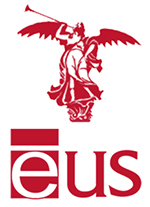"MY BEARD IS MY OWN”: HERMAN MELVILLE’S BEARD POETICS IN HIS NARRATIVES OF MARITIME MASCULINITY
DOI:
https://doi.org/10.12795/REN.2023.i27.13Palabras clave:
Herman Melville, masculinity, beards, sea narratives, white-jacket, 19th century literatureResumen
Este artículo celebra el papel vital de la barba en las narrativas de masculinidad marítima de Herman Melville. Mientras los comentarios limitados sobre la barba se han centrado en el vello facial de Melville, este artículo pretende cambiar el enfoque que aparece en páginas de sus textos anteriores para explicar los matices en la poética de la barba (“beard poetics”) en desarrollo de Melville. Estos matices aparecen primero en Typee (1846), Omoo (1847) y Mardi (1849), tres textos que comienzan con la idea tradicional de la barba como un símbolo de “native otherness” antes de introducir la fuerza simbólica de la barba trenzada y exponer la importancia de la barba en las relaciones homosociales masculinas. Este hilo final es clave en los escritos más cargados sociológicamente, no más que en White-Jacket (1850). Desde el cultivo comunitario de las barbas a bordo del Neversink hasta los trágicos eventos de “La Gran Masacre de Las Barbas,” White-Jacketmuestra una aguda conciencia de los discursos de hegemonía jerarquía, poder y autoridad que subrayan el poder de la barba en el grado de masculinidad de los personajes de Melville en el mar.
Descargas
Citas
ANDERSON, Charles R. Melville in the South Seas. Columbia University Press, 1939.
BARNUM Jill, Wyn Kelley, and Christopher Sten. “Whole Oceans Away”: Melville and the Pacific. Kent State University Press, 2007.
BERCAW EDWARDS, Mary K. “Typee and Omoo.” A New Companion to Herman Melville. Eds. Wyn Kelley and Christopher Ohge, John Wiley & Sons Ltd, 2022. 53-65.
BLUM, Hester. “Melville and the Novel of the Sea.” The Cambridge History of the American Novel. Eds. Leonard Cassuto, Clare Virginia Eby and Benjamin Reiss. Cambridge University Press, 2011, pp. 151–166.
---. “Melville and Oceanic Studies.” New Cambridge Companion to Herman Melville. Ed. Robert S. Levine. Cambridge University Press, 2013. 22–36.
CATON, Neil R., Samuel G. Pearson, and Barnaby J. Dixson. “Is facial structure an honest cue to real-world dominance and fighting ability in men? A pre-registered direct replication of Třebický et al.” Evolution and Human Behavior 43.4 (2022a): 314-324.
CATON, Neil R., Amy Zhao, David M. G. Lewis and Barnaby J. Dixson. “Facial masculinity predicts men’s actual and perceived aggressiveness.” Web. (2022b).
CONNELL, Raewyn. Masculinities. Polity Press, 1995.
CONNELL, R., and James W. Messerschmidt. “Hegemonic Masculinity: Rethinking the Concept.” Gender & Society, vol. 19, no. 6, 2005, pp. 829–59.
DEMETRIOU, Demetrakis Z. “Connell’s Concept of Hegemonic Masculinity: A Critique.” Theory and Society, vol. 30, 2001. 337–61.
DIXSON, Barnaby J., and Paul L. Vasey. “Beards Augment Perceptions of Men’s Age, Social Status, and Aggressiveness, but Not Attractiveness.” Behavioral Ecology 23.3 (2012): 481–90.
DIXSON, Barnaby J., Sulikowski, D., Gouda-Vossos, A., Rantala, M.J. and Brooks, R.C. “The masculinity paradox: facial masculinity and beardedness interact to determine women's ratings of men's facial attractiveness.” Evolutionary Biology 29.11 (2016): 2311-2320.
DIXSON, Barnaby J., Tamara Spiers, Paul A Miller, Morgan J Sidari, Nicole L Nelson, and Belinda M Craig. “Facial hair may slow detection of happy facial expressions in the face in the crowd paradigm.” Scientific Reports 12.1 (2022): Article 5911.
FERRY, Peter. Beards and Masculinity in American Literature. Routledge, 2020.
GENIOLE, Shawn N., and Cheryl M. McCormick. “Facing Our Ancestors: Judgements of Aggression Are Consistent and Related to the Facial Width-to-Height Ratio in Men Irrespective of Beards.” Evolution and Human Behavior 36.4 (2015): 279–85.
GRUETER, Cyril C., Karin Isler, and Barnaby J. Dixson. “Are Badges of Status Adaptive in Large Complex Primate Groups?” Evolution and Human Behavior 36.5 (2015): 398–406.
KIMMEL, Michael S. Manhood in America: A Cultural History. 2nd ed. Oxford University Press, 2006.
LEVERENZ, David. Manhood and the American Renaissance. Cornell University Press, 1989.
MARTIN, Robert K. Hero, Captain, and Stranger: Male Friendship, Social Critique, and Literary Form in the Sea Novels of Herman Melville. University of North Carolina Press, 1986.
MELVILLE, Herman. Typee. 1846. Dodd, Mead and Company, 1923.
---. Omoo. Harper & Brothers, 1847.
---. Romances of Herman Melville: Typee, Omoo, Mardi, Moby-Dick, White-Jacket, Israel Potter, Redburn. Tudor Publishing Co., 1931.
---. White-Jacket. 1850. Harper & Brothers, 1855.
---. “Bartleby, the Scrivener.” 1853. Billy Budd, Bartleby, and Other Stories. Intro. Peter Coviello. Penguin Classics, 2016. 17-54.
---. The Confidence Man: His Masquerade. Longman, Brown, Green, Longmans & Roberts, 1857.
MESSERSCHMIDT, James W. “The Salience of ‘Hegemonic Masculinity.’” Men and Masculinities, vol. 22, no. 1, 2018a. 85–91.
---. Hegemonic Masculinity: Formulation, Reformulation, and Amplification. Rowman & Littlefield, 2018b.
NUNN, Joan. Fashion in Costume, 1200-2000. New Amsterdam Books, 2000.
OLDSTONE-MOORE, Christopher. Of Beards and Men: The Revealing History of Facial Hair. University of Chicago Press, 2015.
PENRY, Tara. “Sentimental and Romantic Masculinities in Moby-Dick and Pierre.” Sentimental Men: Masculinity and the Politics of Affect in American Culture. Eds., Mary Chapman and Glenn Hendler. University of California Press, 1999. 226-243.
PERSON, Leland S. “Melville’s Cassock: Putting on Masculinity in Moby-Dick.” ESQ vol. 40, no. 1, 1994. 1-26.
---. “Gender and Sexuality.” A Companion to Herman Melville, John Wiley & Sons, Ltd, 2006. 231–46.
PETERKIN, Allan. One Thousand Beards: A Cultural History of Facial Hair. Arsenal Pulp Press, 2001.
ROTUNDO, E. Anthony. American Manhood: Transformations in Masculinity from the Revolution to the Modern Era. Basic Books, 1993.
SAXTON, T. K., Mackey, L. L., McCarty, K., & Neave, N. “A lover or a fighter? Opposing sexual selection pressures on men’s vocal pitch and facial hair.” Behavioral Ecology 27.2 (2016): 512–519.
WEINAUER, Ellen. “Melville and Masculinity.” A New Companion to Herman Melville. Eds. Wyn Kelley and Christopher Ohge, John Wiley & Sons Ltd, 2022. 411-421.
WIEGMAN, Robyn. ‘Melville’s Geography of Gender’. American Literary History, vol. 1, no. 4, 1989. 735–53.
YOTHERS, Brian. Melville’s Mirrors: Literary Criticism and America’s Most Elusive Author. 2011. Camden House, 2019.






